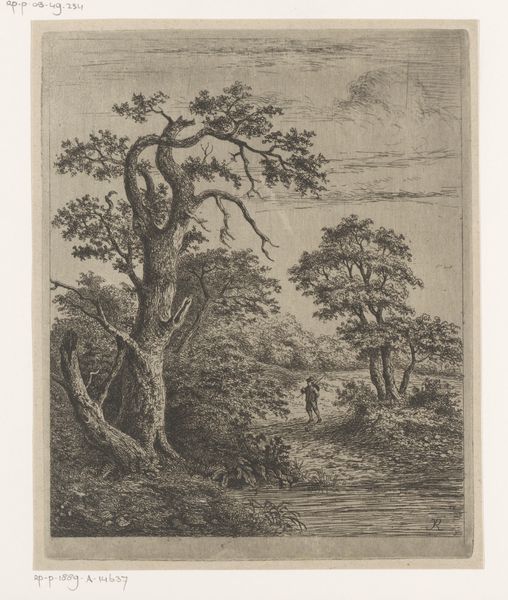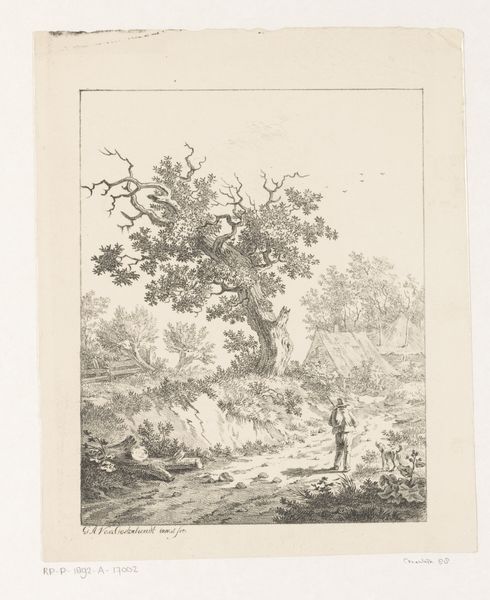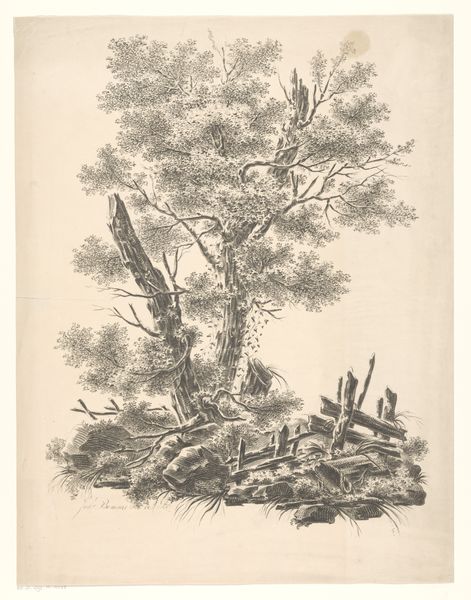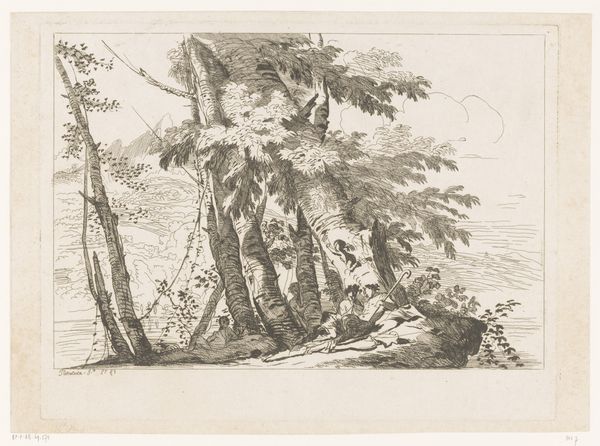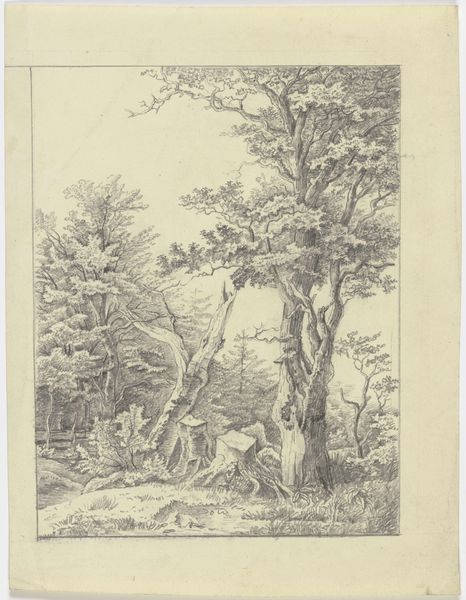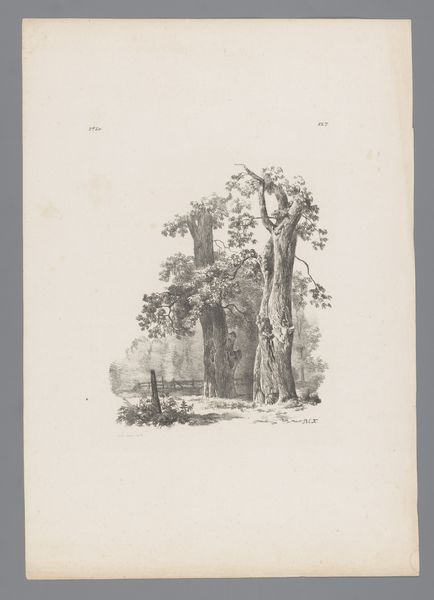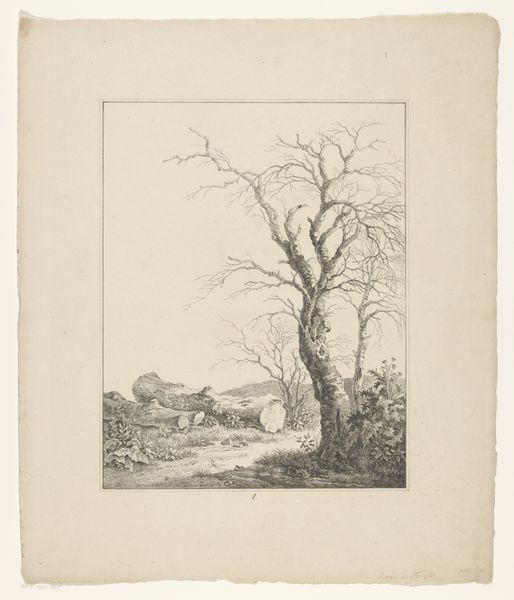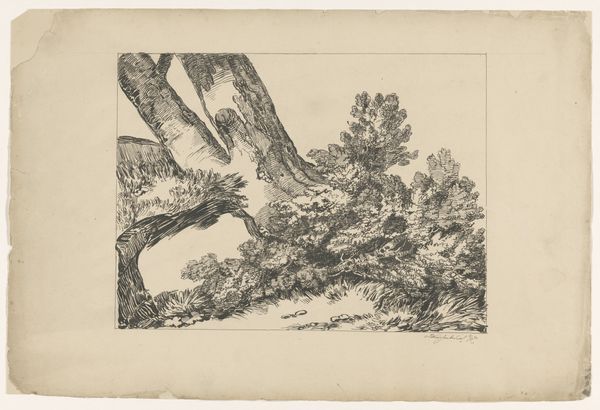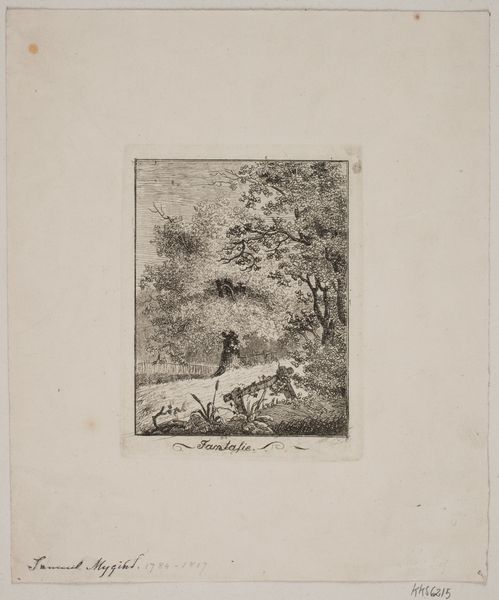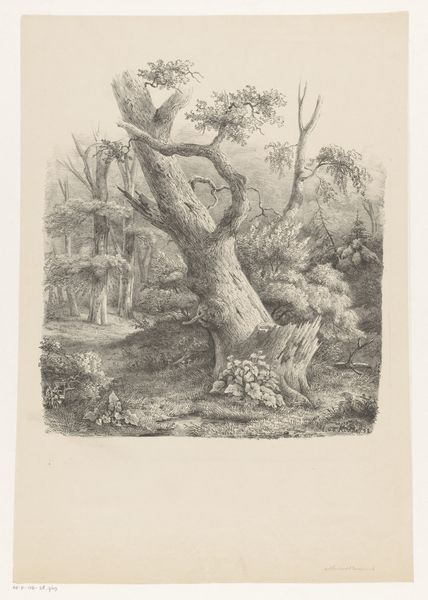
Landschap met soldaat op wacht voor een tent Possibly 1850 - 1858
0:00
0:00
drawing, ink
#
drawing
#
landscape
#
etching
#
ink
#
genre-painting
#
realism
Dimensions: height 510 mm, width 340 mm
Copyright: Rijks Museum: Open Domain
Curator: Welcome. Today we’re looking at “Landscape with Soldier on Guard in Front of a Tent” by Isaac Weissenbruch. It was likely made between 1850 and 1858. Editor: My first impression is quiet and lonely. The delicate hatching gives the whole scene an airy feel, but that solitary figure really stands out. Curator: It’s a remarkable piece, particularly when considered in light of 19th-century military reforms. Weissenbruch situates the soldier not within the pomp and grandeur of official portraiture, but within the monotony, even isolation, of service. Note how small he appears amidst the expansive landscape. Editor: Exactly. The composition itself emphasizes the relationship between the human figure and the natural environment. The stark verticality of the trees is really juxtaposed against the recumbent soldier. Curator: And I find it particularly interesting that Weissenbruch is choosing a seemingly mundane moment. We're invited to reflect on what military life entails, beyond parades. It presents the idea of military presence and occupation. Editor: Absolutely. And his attention to rendering that rock face in the foreground, and the subtle shadows it creates—it directs us toward the quiet dignity of the natural forms. You could almost feel the warm breeze by the scene he creates through this drawing. Curator: Indeed. Weissenbruch’s choice of ink and drawing contributes to this airiness. Etchings allowed for greater distribution too, expanding his audience to consider military, politics, and their day-to-day implications. Editor: Yes. It seems Weissenbruch wanted to show that even though nature appears dominant in this composition, that soldier presence does change it, perhaps not permanently but indelibly. Curator: Precisely. Weissenbruch’s decision elevates that theme beyond a mere observation of everyday life. It’s a quiet social critique. Editor: This piece, even in its simplicity, provides endless angles to explore. The dialogue between form and the historical content remains very relevant. Curator: Indeed, a work that reminds us that even the stillest scenes can hold volumes.
Comments
No comments
Be the first to comment and join the conversation on the ultimate creative platform.
